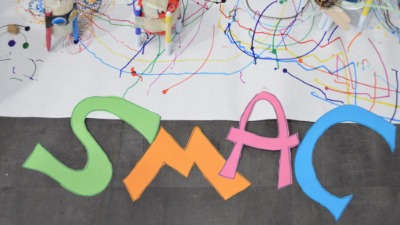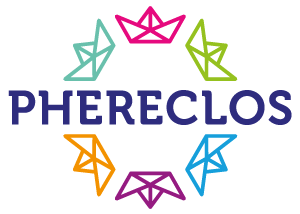The SMAC coding project
- Italy,Trieste
- 2016

| Time frame | |
| Categories | |
| Level of Schools | |
| External Partners | |
| Type of Schools | |
| URL | |
| Number of Schools involved | |
| Number of Schoolheads involved | |
| Number of Teachers involved | |
| Number of Students involved | |
| Number of Parents involved | |
| Number of External Partners involved |
The SMAC coding project was carried out from 2014 to 2018 within SISSA (International School for Advanced Studies), a scientific and higher education institution in physics, mathematics and neurosciences. We explored the potential of science to facilitate social inclusion of teenagers who had interrupted their studies before the terms set for compulsory education. The project focused on the production of video games using Scratch and Arduino to produce working circuits, moving objects, and simple robots.
Starting from 2014, a team of scientists, educators and science communicators planned and organized series of activities to involve groups of teenagers who had abandoned the traditional educational path, involving them with both coding and direct interaction with science and scientists. The project was carried out at SISSA and, in the school year 2015–2016, using Scratch! to develop video-games and “for Arduino to produce working circuits, moving objects, and simple robots.
The idea of a coding project was conceived to help pupils familiarize with math in a less traditional framework.
SISSA was the natural environment where to deliver such workshops had also to be different from their school environment.
The series of workshops ended with a training course for teachers and educators, held at SISSA on April 28th, 2016 for 24 participants, the SMAC pupils took care of the participants with professionality and responsibility. The outcomes were positive. This result is even more amazing if we think that the recipients of the workshop were teachers, the category most feared and hated by the SMAC pupils.
We explored the potential of science to facilitate social inclusion with teenagers who had interrupted their studies before the terms set for compulsory education. The project was carried out from 2014 to 2018 within SISSA (International School for Advanced Studies), a scientific and higher education institution in
physics, mathematics and neurosciences, and was focused on the production of video games using Scratch. The outcomes are encouraging through active engagement, the participants have succeeded in completing complex projects, taking responsibilities and interacting with people outside their usual entourage, within a background in which they have been valued and respected.
The practice was included in the program SISSA for schools and as such was organized and delivered by the experts of Sissa Medialab who had an agreement with SISSA for all the outreach education activities.
The SMAC coding project has shown that even research institutions, which do not have outreach activities as their first aim, can reach usually neglected audiences. It has introduced a truly inclusive practice within an elite institution, which, although not being influenced in a structural way, has nevertheless been contaminated: even those not directly involved have got in touch with a reality of social exclusion, hopefully triggering a reflection.
In our opinion, the key features that made this coding lab successful are: an environment that valued and respected all participants, and a meaningful choice of the activities proposed made possible by a prior deep knowledge of the target audience and its needs. This prior knowledge was in our case embedded in the SMAC school, and made the project easy to start and carry on with no need of big resources and long preliminary studies.
Moreover, this project has shown once more the huge possibilities of coding labs, especially when associated with fun activities as video games, in the development of logical and critical thinking also with hard to reach audiences. These activities and the experience taught us ways to design more inclusive programmes of public engagement.
In our opinion, the key features that made this coding lab successful are: an environment that valued and respected all participants, and a meaningful choice of the activities proposed made possible by a prior deep knowledge of the target audience and its needs. This prior knowledge was in our case embedded in the SMAC school, and made the project easy to start and carry on with no need of big resources and long preliminary studies.
Moreover, this project has shown once more the huge possibilities of coding labs, especially when associated with fun activities as video games, in the development of logical and critical thinking also with hard to reach audiences.
These activities and the experience taught new ways to design more inclusive programmes of public engagement and represent and encouragement to make science a more inclusive environment and make institutions more open to diversity.
The project was designed after a series of meetings of Sissa Medialab experts, the SMAC
educators and pupils, SISSA for schools’ volunteers. Coding was chosen because of its many advantages: coding develops logical and critical thinking, it is fun, flexible and applicable in many different situations, can reveal unexpected capabilities and involves teamwork. When the project started in 2014, coding was completely new in Italian educational curricula. In addition, video games are much connected to fun and are strongly related to smartphones, tablet and the likes, which they deem important and are very present in their daily life. Moreover, this kind of knowledge could be used as an exchange currency in the social bargaining with their most fortunate peers (“I know something that you haven’t even heard of”). Finally, coding could be a natural way to introduce concepts in mathematics without them realizing it, as programming necessarily implies the use of mathematics and logic.
1) Coding was new in Italian schools at the time of the project.
2) It was a real collaboration between an excellent scientific institution and an association helping marginalized people (new immigrants, homeless people, disadvantaged children and teens).
3) It was inclusive and the pupils were the real protagonists of the activities and cooperated to their development and delivery.
4) It was documented and evaluated.
All the project was based on a series of workshops to develop video-games using Scratch! and Scratch for Arduino. It ended with a workshop dedicated to teachers and educators where the pupils were the mentors and facilitators.
The pupils were the protagonists of the process and all activities were designed aiming at participation and empowering.
All parties learned a lot and the interaction had a real impact both on the pupils and the educators.
The SMAC coding project involved a group of teen-agers 12-16 years-old who drop pout of school and engaged them as the creators and owners of the entire process.
Pupils participating in the projects came from various difficult backgrounds. During the evaluation, the basic rules of ethically responsible research were observed, namely ensuring the confidentiality and anonymity of the parties, leaving the participation on an entirely voluntary basis, and adapting the activities to the response of the pupils.
The fact that the pupils had to develop their own games implied to put together all knowledge and practical and technical skills to get to the desired result.
The SMAC coding project relied on the strong collaboration and cooperation among various institutions and association (SISSA, SMAC, Coderdojo Trieste).
The connection with the SMAC school allowed to have a real impact on some fraction of marginalized young people and was deeply rooted in the Trieste environment.
Using coding as a way of engagement also implied a training in using and understanding digital tools.
Association San Martino al Campo run the SMAC school and developed the program with the educators of Sissa Medialab.
SISSA_International School for Advanced Studies hosted the workshops, offered the multimedia room for the final workshop for teachers, provided volunteers for mentoring and assisting the pupils.
Coderdojo Trieste assisted the development and the implementation of the final workshop for teachers.
The described project has shown that even research institutions, which do not have outreach activities as their first aim, can reach usually neglected audiences. It has introduced a truly inclusive practice within an elite institution, which, although not being influenced in a structural way, has nevertheless been contaminated: even those not directly involved have got in touch with a reality of social exclusion, hopefully triggering a reflection.
5 SMAC school educators, 5 SISSA Medialab experts, 8 SISSA PhD students,3 Coderdojo Trieste experts.
The project was documented and evaluated through various methods described here:
Cerrato, S., Rizzato, F., Tealdi L. and Canel, E. (2018). ‘A coding lab to increase science capital of school dropout teenagers’. JCOM 17 (04), N03.
https://doi.org/10.22323/2.17040803.
